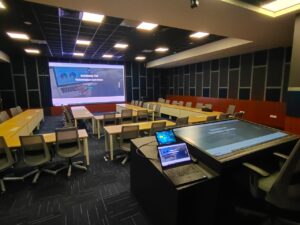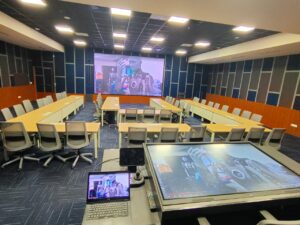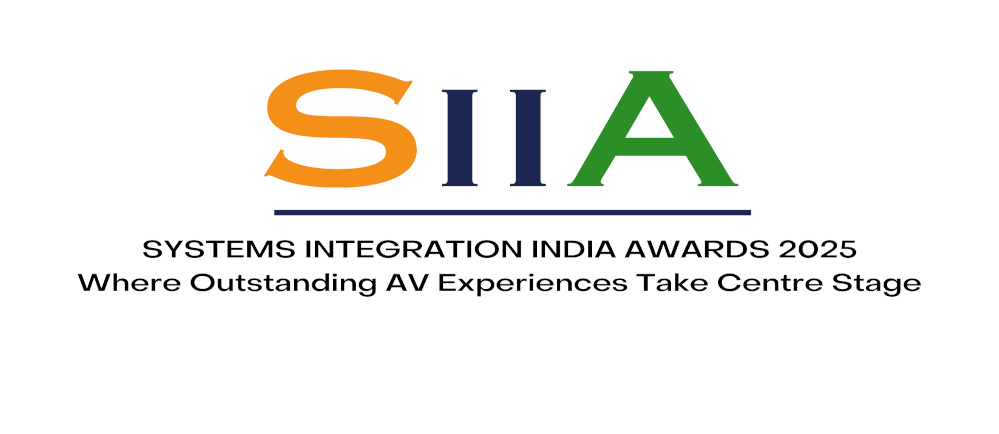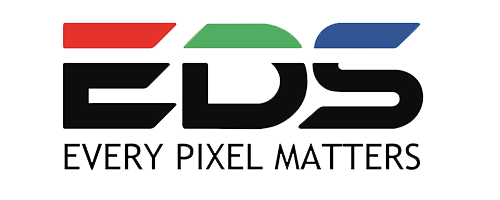BUDGET: Between 1 crore INR and 4.99 crore INR (More than USD135,000 but less than USD540,000)



Project Overview
The Indian Institute of Science (IISc), established in 1909, is India’s leading institute for advanced scientific and technological research and education. Over the past century, it has built a strong global reputation, consistently ranking among the top institutions in India and worldwide.
Spread across a lush 440-acre campus in Bengaluru, a city renowned for its high-tech industries in electronics and IT, IISc fosters a vibrant academic environment. It actively collaborates with national and international organisations, making significant contributions to research and innovation.
EYTE is honoured to have developed the state-of-the-art Visualisation Centre in the new Technology building for the Centre for Infrastructure, Sustainable Transportation and Urban Planning (CISTUP) at IISc, under the guidance of CP&L Consultants. This facility supports collaborative research and analysis focused on Bengaluru’s traffic and infrastructure challenges.
The Centre serves as a key platform for stakeholders such as government officials, the police department, and urban planners to explore and implement infrastructure improvements. Additionally, it facilitates internal research and collaborative studies within IISc, further enhancing its role in shaping smart, data-driven urban solutions.
What did the client want to achieve?
The Centre for Infrastructure at IISc envisioned a modern, technologically advanced research facility to address Bengaluru’s traffic and infrastructure challenges. The goal was to create a space that supports research students while facilitating collaboration with government bodies for real-world problem-solving.
To bring this vision to life, the consultant designed a centre equipped with interactive audiovisual technology, including a large video wall, smart interactive boards, and learning tools integrated with research databases. The space was created to encourage brainstorming, the exchange of ideas, and joint efforts between researchers and public stakeholders.
This environment not only supports cutting-edge research but also enables the demonstration of innovative projects to decision-makers. It is intended to act as a hub where advanced solutions for traffic management and infrastructure planning can be explored and refined collaboratively.
The facility’s design emphasises adaptability, allowing users to stay proficient with emerging tools and methods—critical in today’s rapidly evolving technological landscape.
Scope of work your company was involved in
EYTE was entrusted with the responsibility of designing and executing a technologically advanced, world-class Visualisation Centre at IISc. The aim was to create a collaborative space that enhances productivity and efficiency through the seamless integration of cutting-edge audio-visual technologies. EYTE’s scope included the complete supply, installation, project management, and commissioning of the systems.
The project commenced with detailed site surveys and assessments in close coordination with architects and contractors. Based on these inputs, EYTE prepared precise technical drawings, including equipment layouts, raceway plans, conduit paths, and power and data point requirements.
AV Equipment placements and display setups were optimised using line-of-sight analysis and viewing diagrams to ensure effective communication and visibility.
Comprehensive training sessions were conducted for the staff and facility management teams to familiarise them with system operation and maintenance.
Through meticulous planning, coordination, and execution, EYTE successfully delivered a future-ready collaborative space that supports IISc’s research, innovation, and institutional objectives.
What Key Challenges were faced?
EYTE encountered two significant challenges during the execution of the Visualisation Centre project at IISc. The first challenge arose from our late entry into the project, which occurred during its final stages. By this time, the architects had already made significant progress in achieving a carefully curated aesthetic design. Integrating AV infrastructure into the existing setup without disrupting the architectural vision required meticulous planning and coordination.
The second major challenge was the tight project timeline imposed by the client. With financial closure deadlines and the academic calendar fast approaching, there was immense pressure to complete the project within a limited timeframe. To meet this deadline, the EYTE team collaborated closely with manufacturers to expedite equipment deliveries and executed a detailed backwards project planning strategy, ensuring that all activities aligned with the go-live date.
These challenges demanded agility, precision, and a people-centric approach. Through proactive communication, technical expertise, and strong project management, EYTE overcame the hurdles and successfully delivered a fully operational, future-ready collaborative environment.
How were those challenges resolved?
EYTE faced two key challenges during the implementation of the Visualisation Centre at IISc:
1. Late-stage project integration:
The project was awarded to EYTE at a point when construction was nearing completion. Integrating AV systems at this stage meant navigating limited access and existing design constraints. To overcome this, EYTE rapidly developed comprehensive technical drawings, including conduit layouts, raceway diagrams, and power/data specifications. Close coordination with the architect and various contractors enabled quick resolution of dependencies. Proactive planning and effective communication were crucial to maintaining timelines.
2. Tight timelines for material delivery:
With a strict go-live deadline, timely procurement was vital. EYTE’s sourcing team worked across multiple locations and partnered with manufacturers to ensure on-time delivery. For critical components with longer lead times, alternate standby equipment was arranged to keep the schedule intact. These efforts were supported by strong vendor relationships, which played a pivotal role in meeting the project’s delivery milestones.
Through effective project management, agile coordination, and user-focused training, EYTE successfully delivered a high-performance, future-ready collaborative space
How has your work helped the client
The advanced AV technology implemented by EYTE at IISc’s Visualisation Centre has transformed the research and learning experience for the department. By integrating state-of-the-art audiovisual systems, the centre now offers an immersive, interactive, and inclusive environment that enhances the study of complex infrastructure and traffic challenges.
Interactive displays, immersive audio, and dynamic visualisation tools have significantly improved engagement, helping researchers and students better understand intricate scientific and technological concepts. High-resolution digital screens, interactive panels, and built-in learning tools simplify data interpretation.
These technologies promote group work and allow for real-time interaction and idea sharing. Moreover, web conferencing capabilities have expanded the centre’s reach beyond the physical space, enabling participation from remote researchers, government stakeholders, and collaborators at other institutions.
The introduction of these AV innovations has notably increased the faculty’s efficiency and research productivity. Users report heightened focus, improved comprehension, and better outcomes during discussions and sessions.
What are you most proud of about the project?
EYTE’s most proud moment came when we had the opportunity to collaborate with the prestigious Indian Institute of Science (IISC), a renowned platform for advancing science and technology. As a technology solutions provider, we were thrilled to contribute to their mission by delivering cutting-edge tools that support their modern scientific research and high-end technology labs.
We successfully met the architectural intent and ensured seamless operations through meticulous project management, timely delivery, and proactive problem-solving, which eliminated the need for rework. Working with IISC was a gratifying experience, thanks to their understanding and cooperation.
The project’s success was further enhanced by our comprehensive training and handover process, which not only earned us a stellar reputation but also opened doors for future collaborations. The appreciation and recognition from IISC are a testament to our team’s hard work and dedication, and we proudly consider it a feather in our company’s cap.












